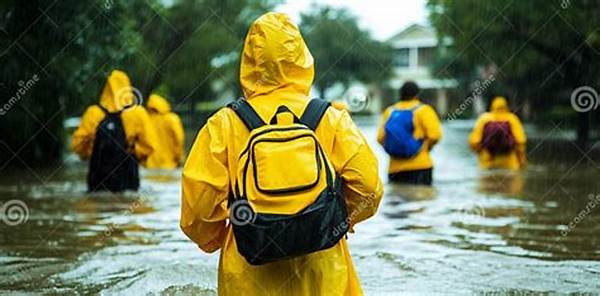In a world where unpredictability reigns, ensuring the safety of visitors during disasters has turned into both a crucial skill and an art form. Imagine yourself at a theme park with the Ferris wheel turning against a blue sky, an already magical day. Suddenly, a voice crackles to life over the loudspeakers, “This is an emergency evacuation. Please follow the instructions calmly.” Jumbled thoughts about where you parked your car mix with a fight-or-flight urge. Humor and fear dance hand-in-hand, demanding fast decisions and trust in the people guiding you.
Read More : Animal Rehabilitation Center Developments
As visitor evacuation stories make headlines, businesses and safety experts share both real and imagined dramas: from a vivid account of the unofficial guide herding bewildered zoo tourists to a wedding planner who switched from tulle to tactical gear in seconds. Everyone is asking, “How prepared is prepared enough?” Through data-driven investigations, we are drawn into a world where visitor evacuation is a crucial marketing point and a moral responsibility.
The Importance of Visitor Evacuation Planning
“Visitor evacuation due to disasters” encompasses more than simple logistics. It embodies a promise to safeguard lives, both entertaining and educating guests while preparing for the unforeseen. Tourist attractions, sporting events, and corporate buildings alike acknowledge the need for clear strategies. These operations are underpinned by research, interviews, and heartfelt testimonials, offering compelling narratives on just how essential readiness truly is.
During an evacuation, emotions and adrenaline run high, creating a unique cocktail that demands careful management. Hosts and businesses must merge creativity with rationality, providing instructions that engage and reassure even amidst chaos. Convention centers hold drills inspired by Hollywood scenes, employing experts to study human behavior during emergencies. The art of evacuation turns psychologists into undercover storytellers, examining what drives people to flee or freeze.
Communicating During a Disaster
Amid uncertainty, effective communication is vital. Stories abound about unexpected heroes guiding the way with whistles and flashlights. Organizations have investigated the best means to reach their audiences, whether via social media, text alerts, or age-old sirens. Each method rests on an understanding of human nature, utilizing both rationality to inform and emotion to persuade.
Community and Accountability in Crisis
When discussing “visitor evacuation due to disasters,” we must consider the shared responsibility involved. Each evacuation plan acts like a marketing proposal, selling safety to not only immediate guests but also the broader community. Crowd control experts take cues from studies, confirming how shared accountability turns strangers into allies, unveiling humanity at its finest.
Key Elements of Visitor Evacuation Plans
Detailing “visitor evacuation due to disasters,” consider these key stages:
Roles and Responsibilities
Identifying who does what during an evacuation is vital. From coordinators in safety vests orchestrating movements to unsung staff acting as liaisons, each person contributes to an effective evacuation. Organizations treat these plans as living documents, tweaking and refining with new data and firsthand accounts.
Enhancing Safety Through Innovation
Harnessing technology also plays a pivotal role. Real-time data analysis, apps designed to offer route guidance, and VR familiarization sessions bring a fresh perspective to safety measures. Companies adept in visitor logistics are often the unsung heroes in disaster narratives, turning potential tragedies into triumphs through strategic, emotionally intelligent practices.
Read More : Budget-friendly Nature Tourism
A Closer Look at Case Studies and Examples
Consider these real-world applications in the realm of “visitor evacuation due to disasters”:
Navigating the Intricacies of Evacuation
As we peel back the layers on “visitor evacuation due to disasters,” we see an intricate tapestry interwoven with stories of bravery, comedy, and solidarity. The very nature of evacuation challenges preconceived notions, requiring a blend of structured guidelines with the ability to adapt in real-time.
In the wake of such episodes, analysis and interpretation reveal the adaptability of human nature, teaching valuable insights about communal harmony and the resolve found in unity. These events turn into powerful marketing narratives, selling the formidable spirit of human cooperation and the foresight of proactive planning.
Evacuation as Storytelling
Ultimately, each evacuation forms a narrative, a story told through action and intent. It is a dialogue between safety planners and visitors, where innovation meets the fundamental human need to feel secure. Through humor and humility, intelligence and instinct, we craft tales of survival that resonate, educate, and inspire others.
In conclusion, the landscape of “visitor evacuation due to disasters” is one both scientific and artful, a domain that demands growth—and in the face of chaos, reveals the strength and creativity inherent in well-executed strategies. This intricate dance of preparedness serves as both a reminder and a call to action: Are we truly prepared to guide our visitors to safety when disaster strikes?


